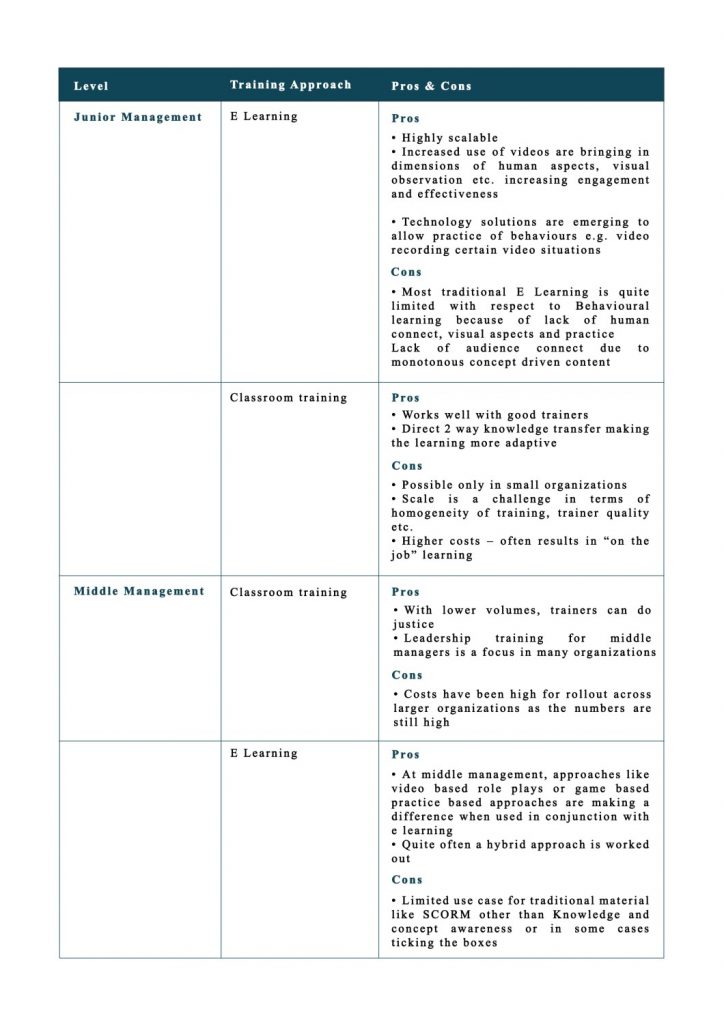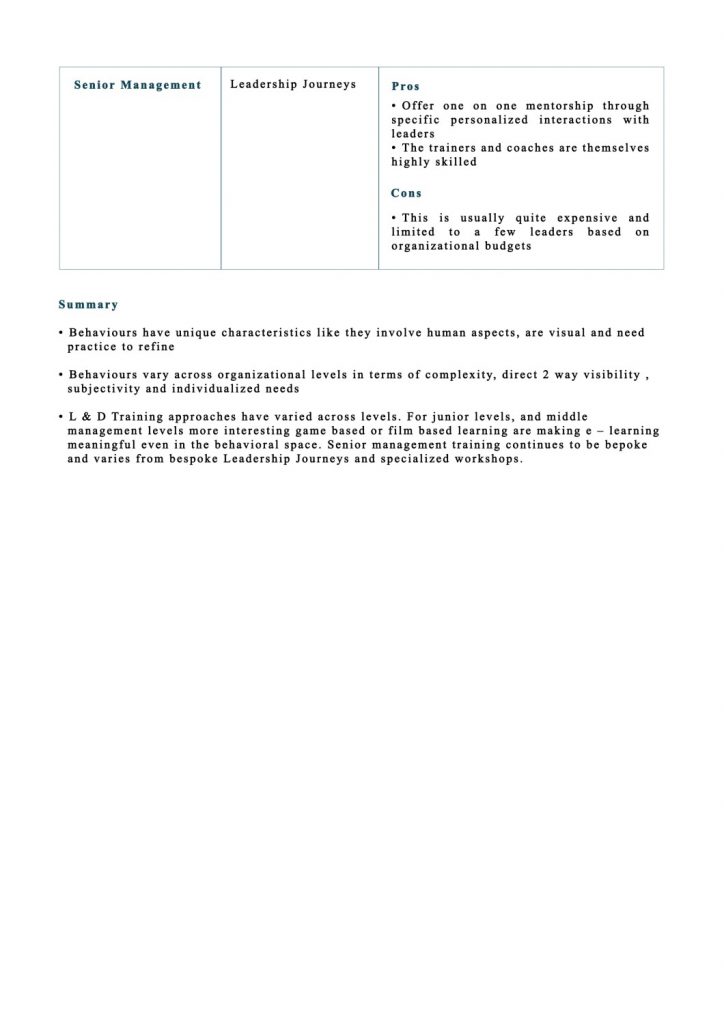Behavioral Training has always been identified as critical by organizations and core to long term sustainable growth. However the way Learning and Development (L & D) departments have addressed these needs has varied widely. One of the biggest differentiators has been basis the training needs at different levels of the organization hierarchy. This article specifically examines some common trends we have noticed based on conversations with various stakeholders in this space including HR, L & D professionals as well as the learners themselves. Hopefully this will resonate with some of our partners and audiences. Would love to hear from them on their experiences.
But before we jump into the training methodology, let’s re-examine what are some of the key elements in Behavioural Training, which makes it different from other types of training.
Key Elements in Behaviours
- Behaviours are human: Behaviours have a strong human component and often come with emotional dimensions. E.g. Lets say having empathy for colleagues at work is a key element in good Collaborative behaviour
- Behaviours are visually demonstrable: Behaviours by definition, are always as practiced by someone and as seen by the other. It is a visible act of doing. This is a unique dimension which may not be applicable to product knowledge, concepts, domain knowledge etc. Imagine the classic challenge of describing the elephant to someone who has never seen one before….do you describe long trunk, two eyes, tail, 4 feet etc. Imagine the plight of the learner and what she may be visualizing.
Both this human component and the visual component really contribute to
the essence of behavioural training challenege.
- Behaviours need practice: There is the commonly understood 10,000 hours rule to success by Malcolm Gladwell… to summarise in brief – it takes 10,000 hours to master a discipline – music, sport, surgery..you name it. While behaviours may not be entire disciplines in themselves, the principle applies

Behaviours and Organizational Levels
Now that we have understood some of the fundamental dimensions of behaviours, lets us take a look at how these behaviours can vary across different organization levels. For simplicity, we have classified the levels into Junior Staff, Middle Management and Senior Management.
Junior Staff
- Usually these individual contributor roles – many in customer facing roles and others in individual roles
- Behaviours often involve simpler activities with direct visibility at face value– establishing a good connect with a customer – this may involve a warm greeting, a wide smile etc. or for an internal employee acknowledging the requirement and communicating back to the staff.

Middle Management
- Behaviours are often more complex – this may involve ensuring the junior staff is enabled to show the behaviours desired. This therefore involves multiple interactions, consistency in behaviour( unline a junior staff member, you can’t get away with a single sales pitch and sale to the customer) often linked to attitude and mindset.
- The behaviour can be subjective – how does one delegate work? how does one divide one’s time between different team members. Sometimes there are no right or wrong answers or multiple right answers, depending on the manager and their team and the organization set up
- The behavioural choices involve decisions and styles of the manager. The important aspect is to make the manager think
 Senior Management
Senior Management
- At this level, all the dimensions already mentioned under Middle Management get enhanced but with the complexity of leadership writ large
- At the same time, there is a different level of abstraction and visibility of behaviour with people you may not directly interact with and hence have no direct feedback. For example, say in a town hall, a senior management person is communicating the new promotion policy in an organization. It’s a classic public peaking situation with one to many. There is a strong element of projection, lack of specific one on one feedback etc. Or lets say a new sales strategy is rolled out…how is the ground level reacting to this etc…this is much more challenging since there is no direct recurring feedback and there may be organizational layers preventing a smooth transmission of this information.
The situation may be different for each senior executive depending upon the company, the function and the role.

Deciding on Training Approaches at Multiple Levels: A Logistical Perspective
Let’s now wear the hat of a L & D professional and look at their approaches to the massive differences in these behaviours and the challenges.
1. Volumes or no of people: Let’s take a imaginary organization of say 1,000 people – say about 50 people in senior management, 200 in middle management and another 750 people. Working out a program for 750 people versus 50 people is vastly different. For small organizations, the absolute no’s at junior levels themselves may be small – say even 50 to 100 people,
2. Locations and Training Infrastructure: Are there multiple locations, is there an online element, what kind of technology and delivery infrastructure is available etc.
3. Bespoke Training: As one goes higher up the hierarchy, the degree of standardization desired tends to reduce and more personalized approaches are desired.
4. Budgetary considerations: Organizations have different budgetary mixes defined for training for different levels based on the core learning challenges identified. This is where training methodologies and logistical aspects come to the fore.
Keeping the above in mind, typically we have been observing the following trends:
Training Approaches



